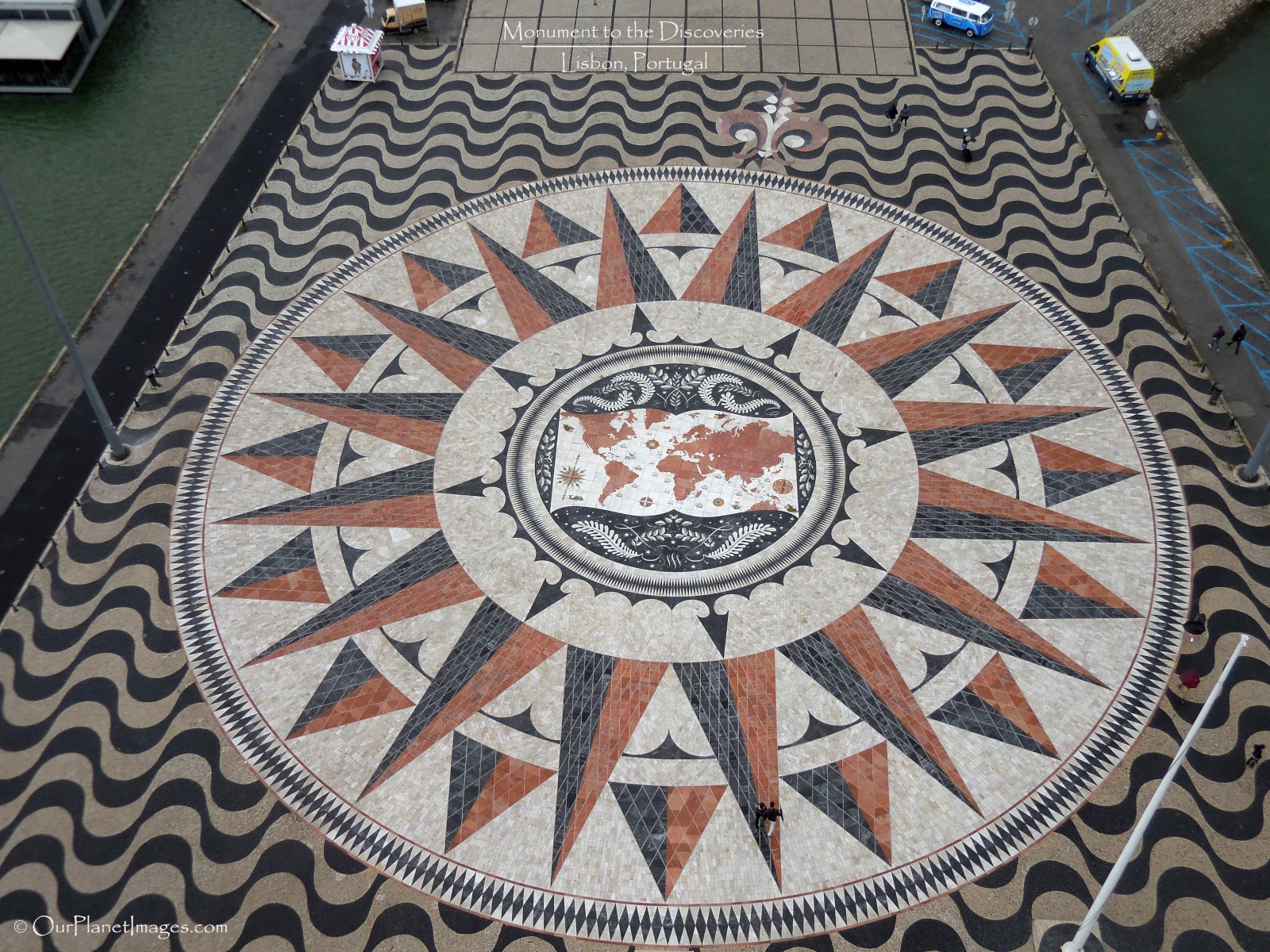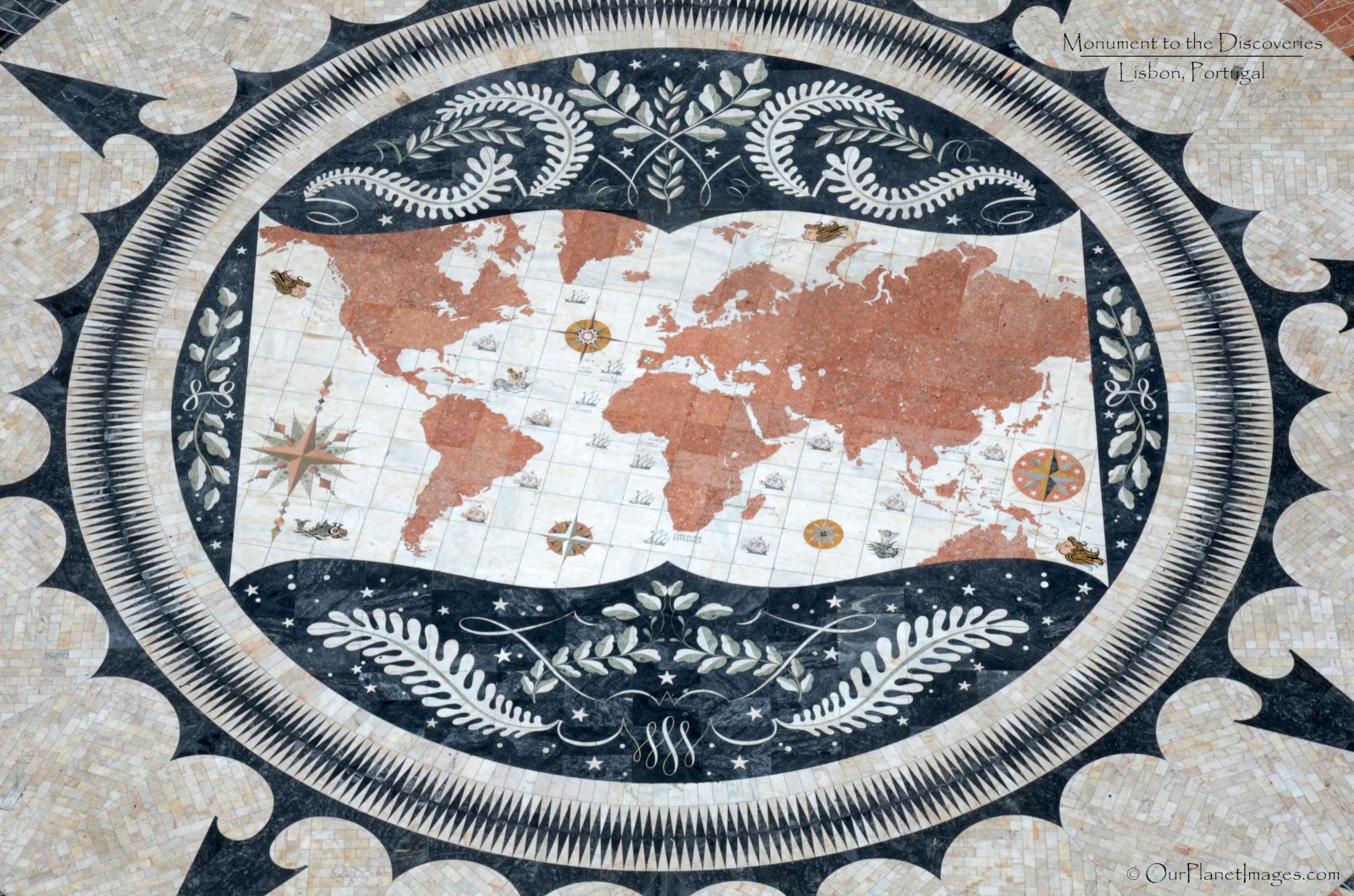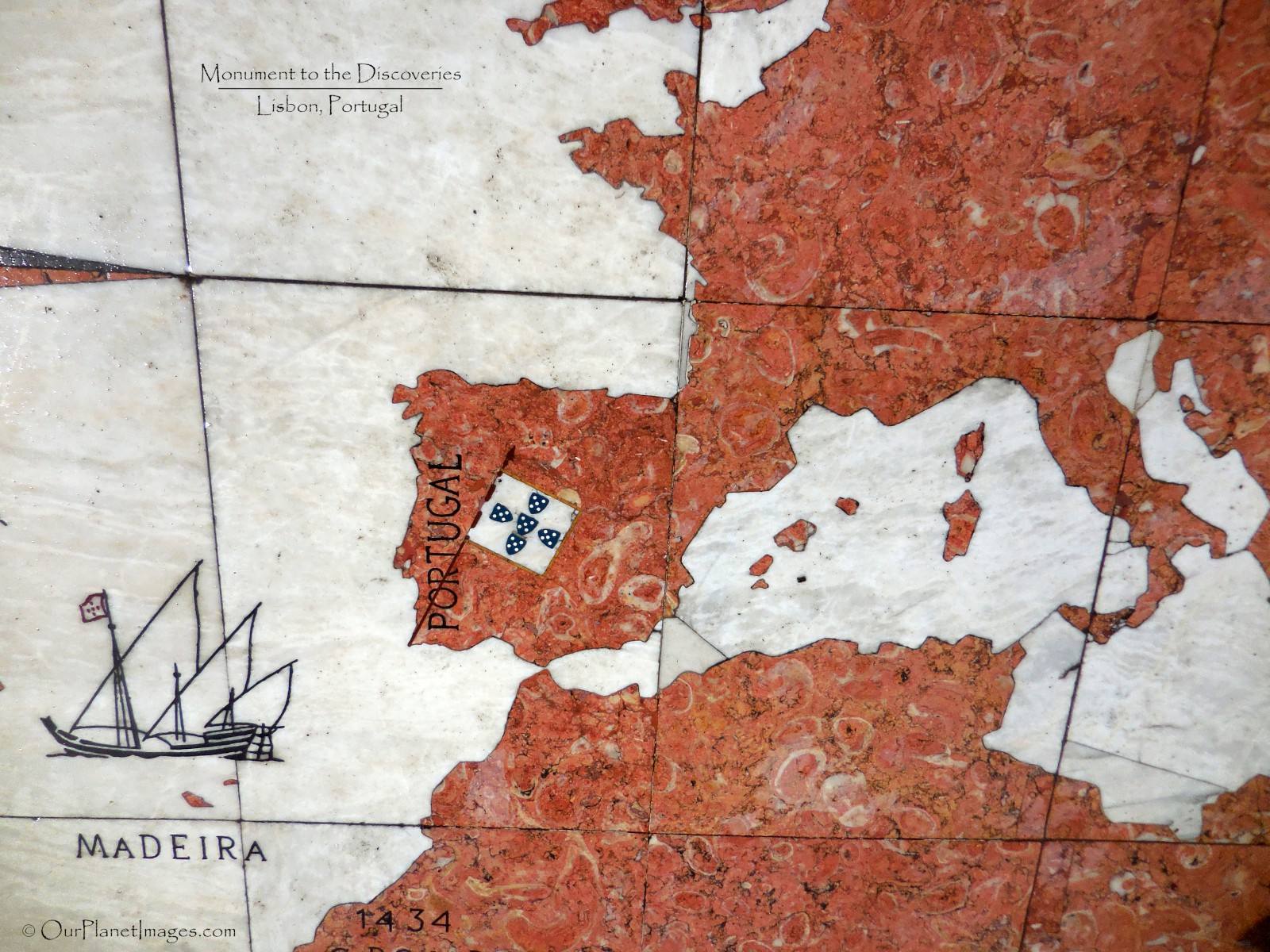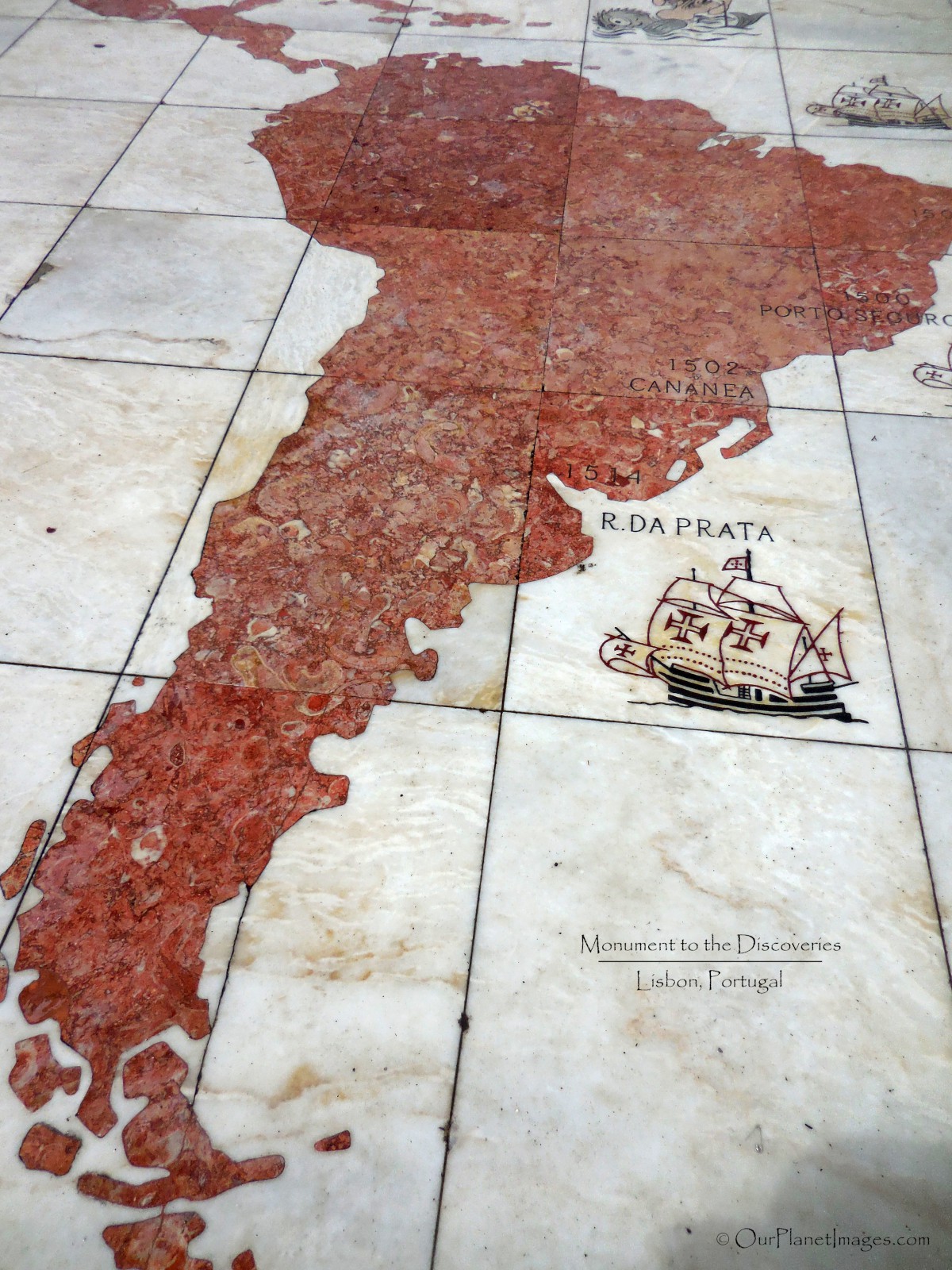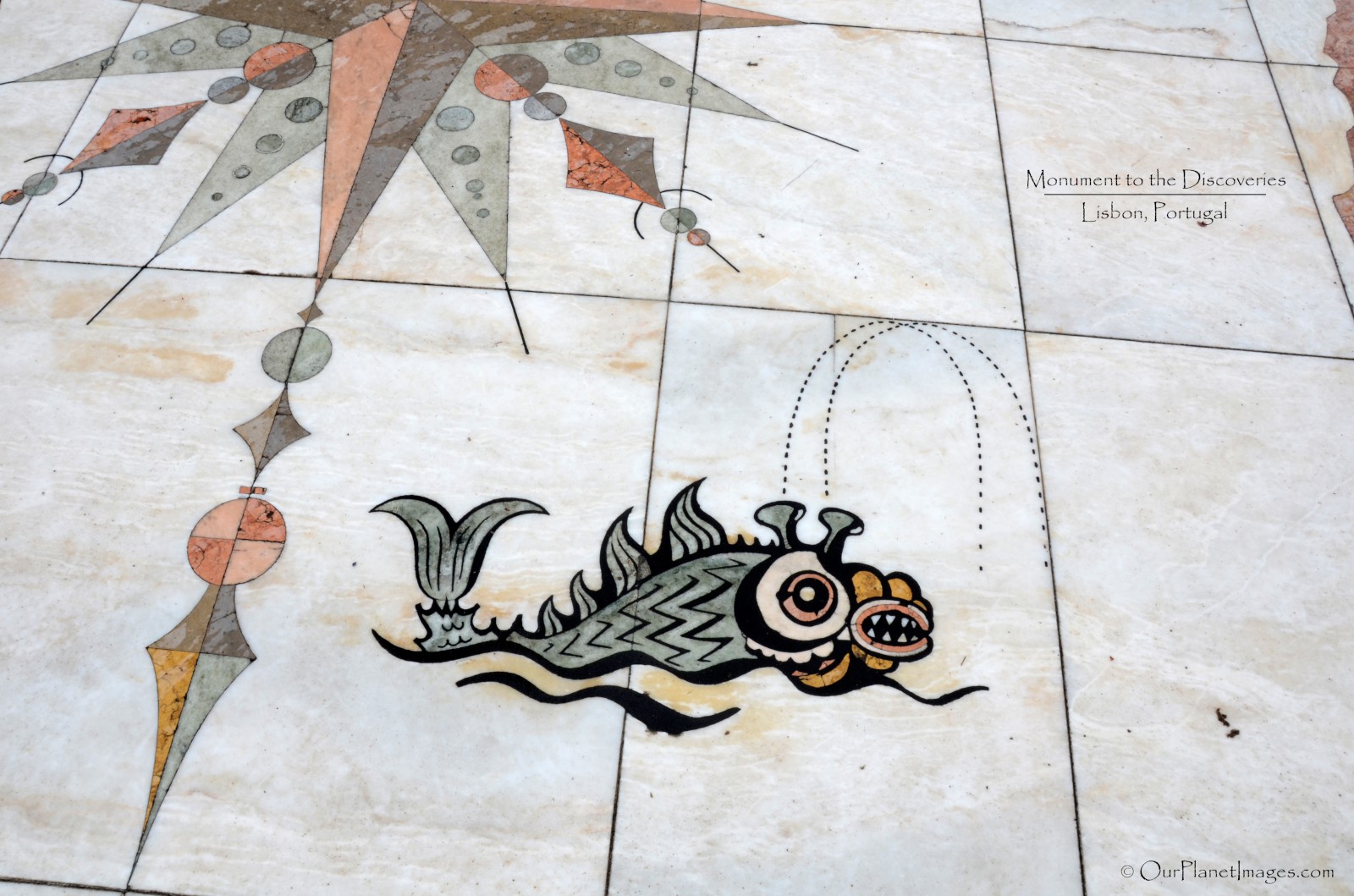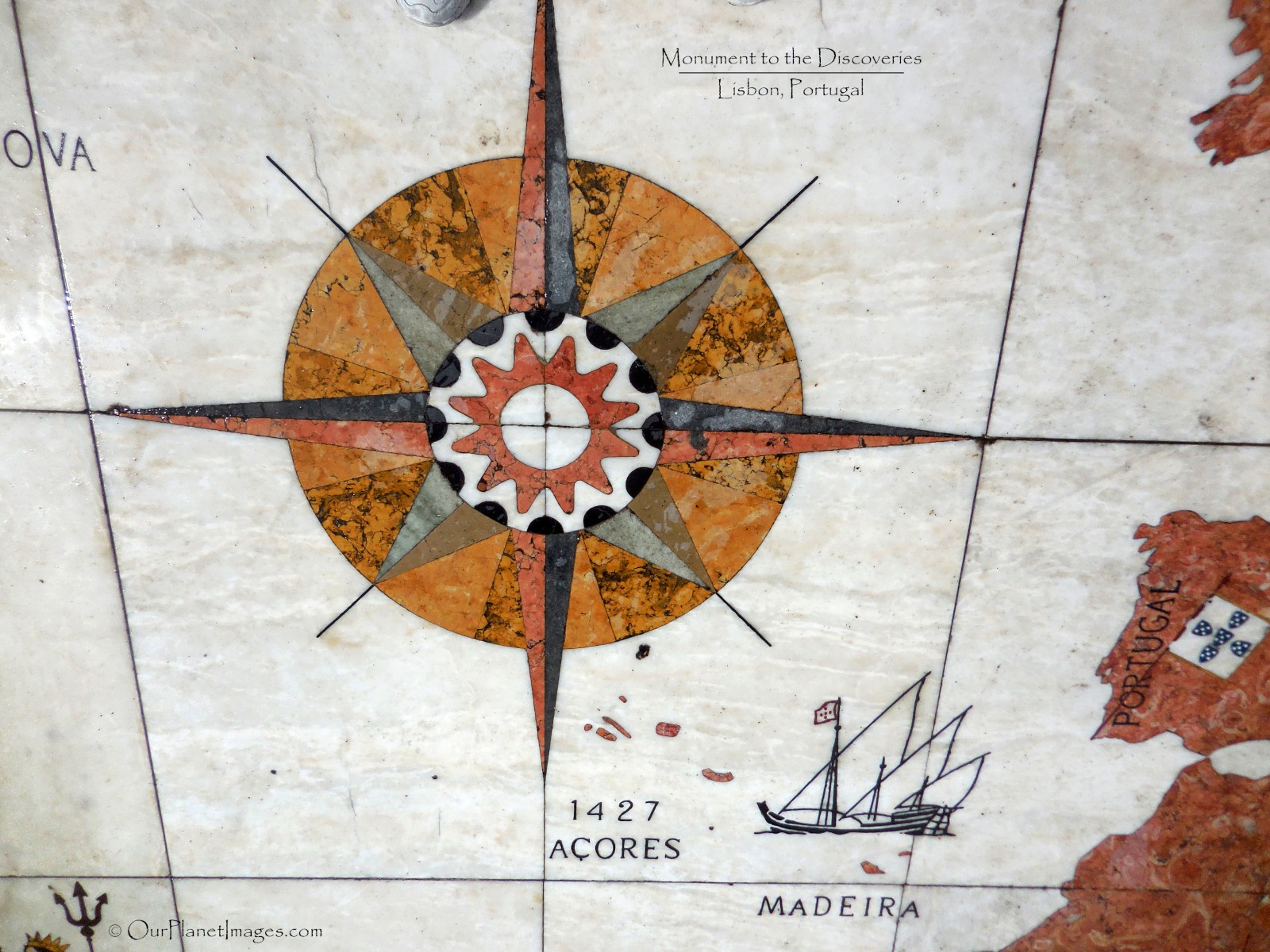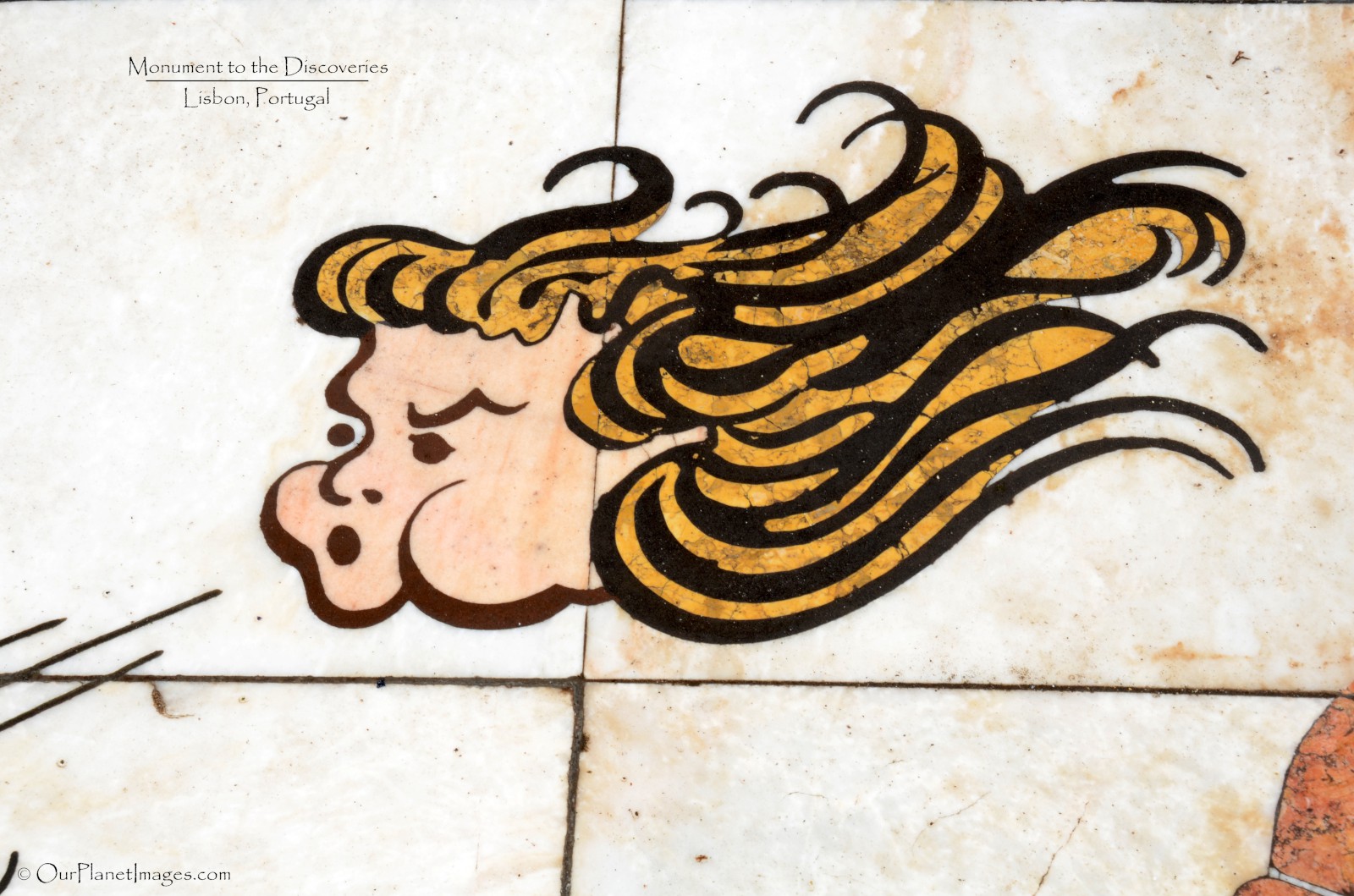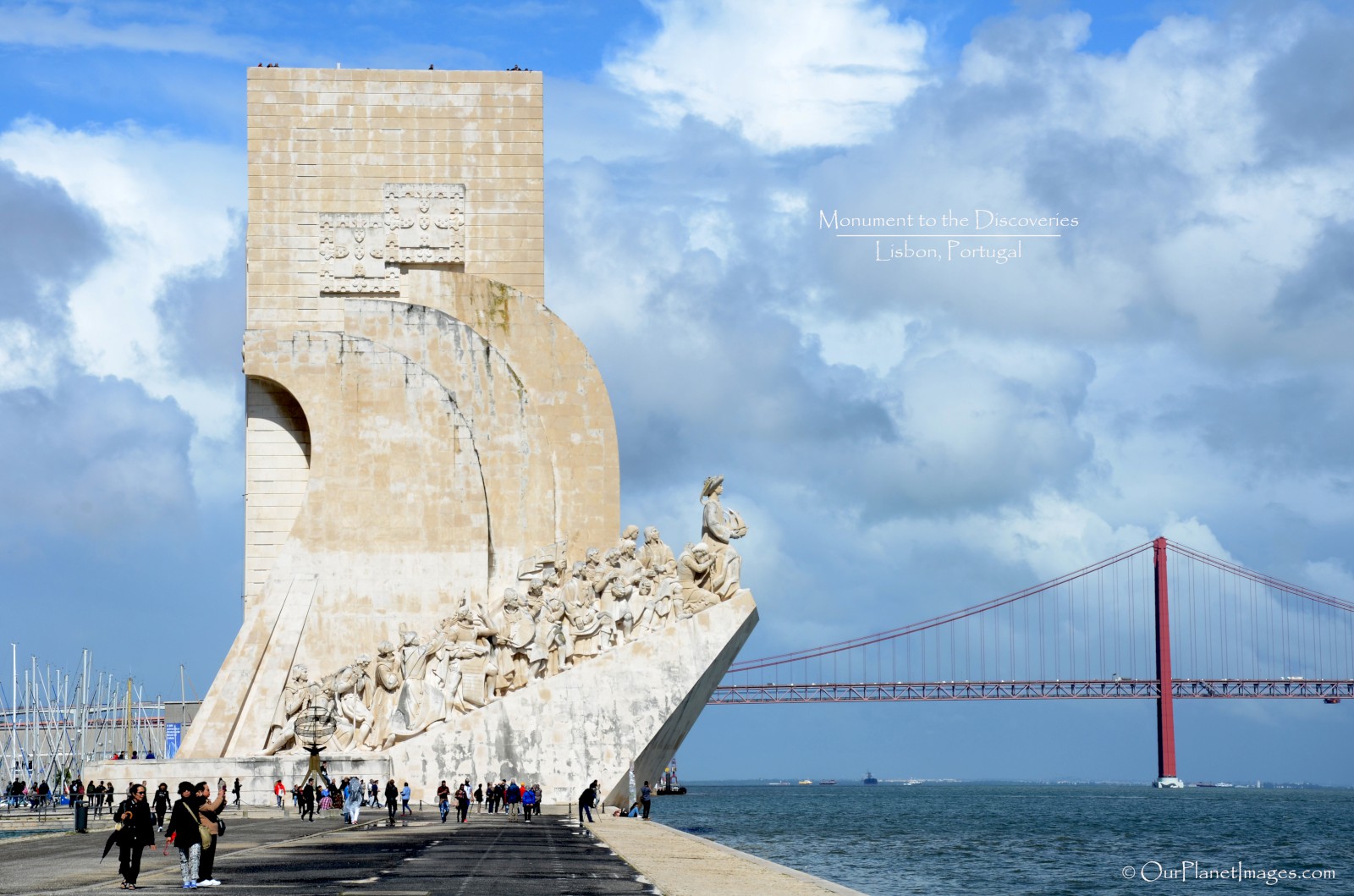The Monument to the Discoveries is located in Lisbon, Portugal and was built to honor the Portuguese discoveries during the age of great geographical discoveries in the 15th and 16th centuries.
The monument is impressive in its size and architectural design. The monument stands 171 feet tall, 151 feet long and 66 feet wide. The curved portion of the monument is designed after the bow (forward part) of a Portuguese ship used during the time of discoveries. Above the bow is the shield of Portugal on both sides and above the entry door is the sword of Real Casa de Avis.
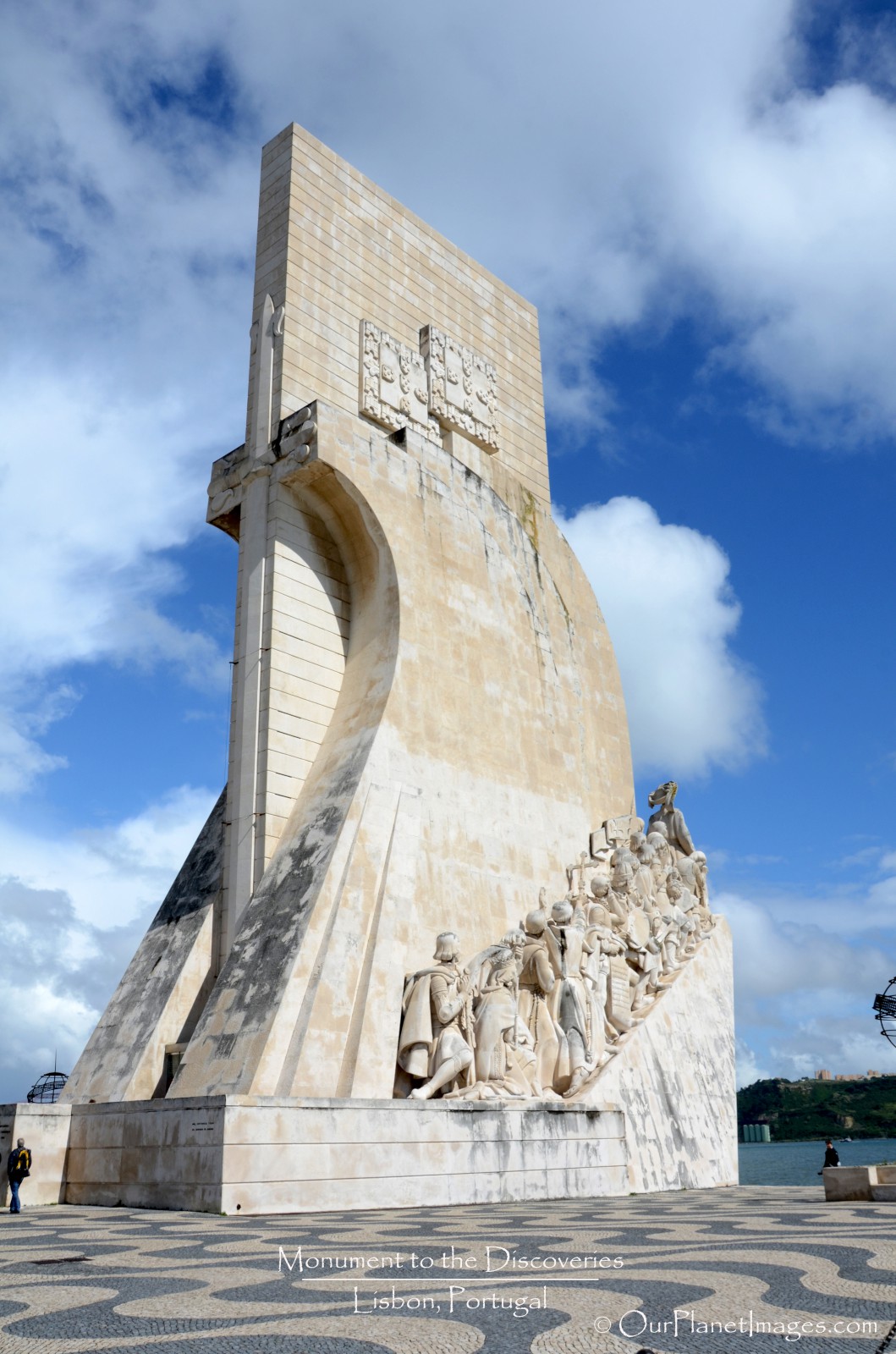
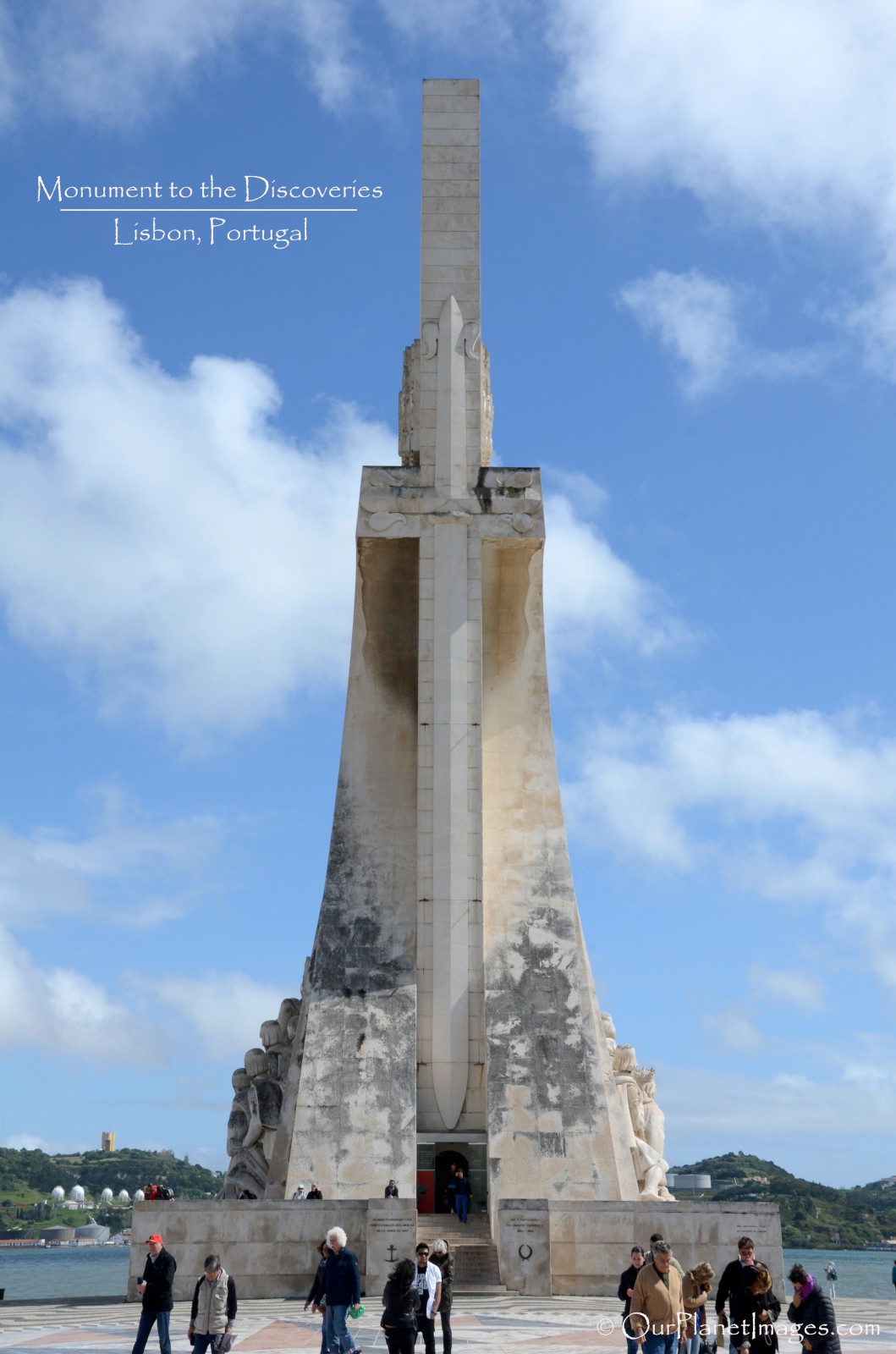
On each side of the monument stands a modern metallic globe which represents that Europeans extended their culture virtually to the entire globe during the 200 year period of discoveries.
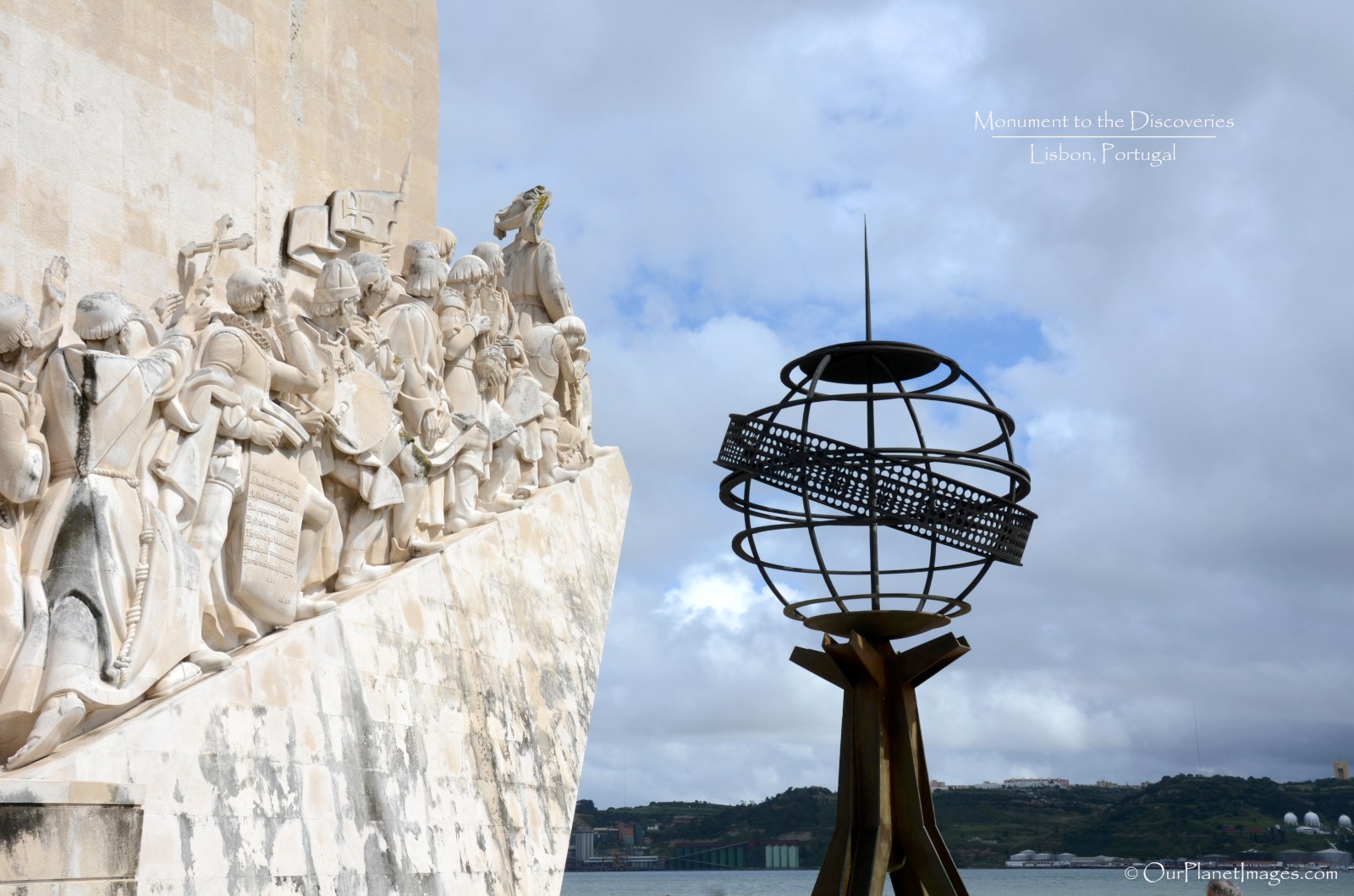
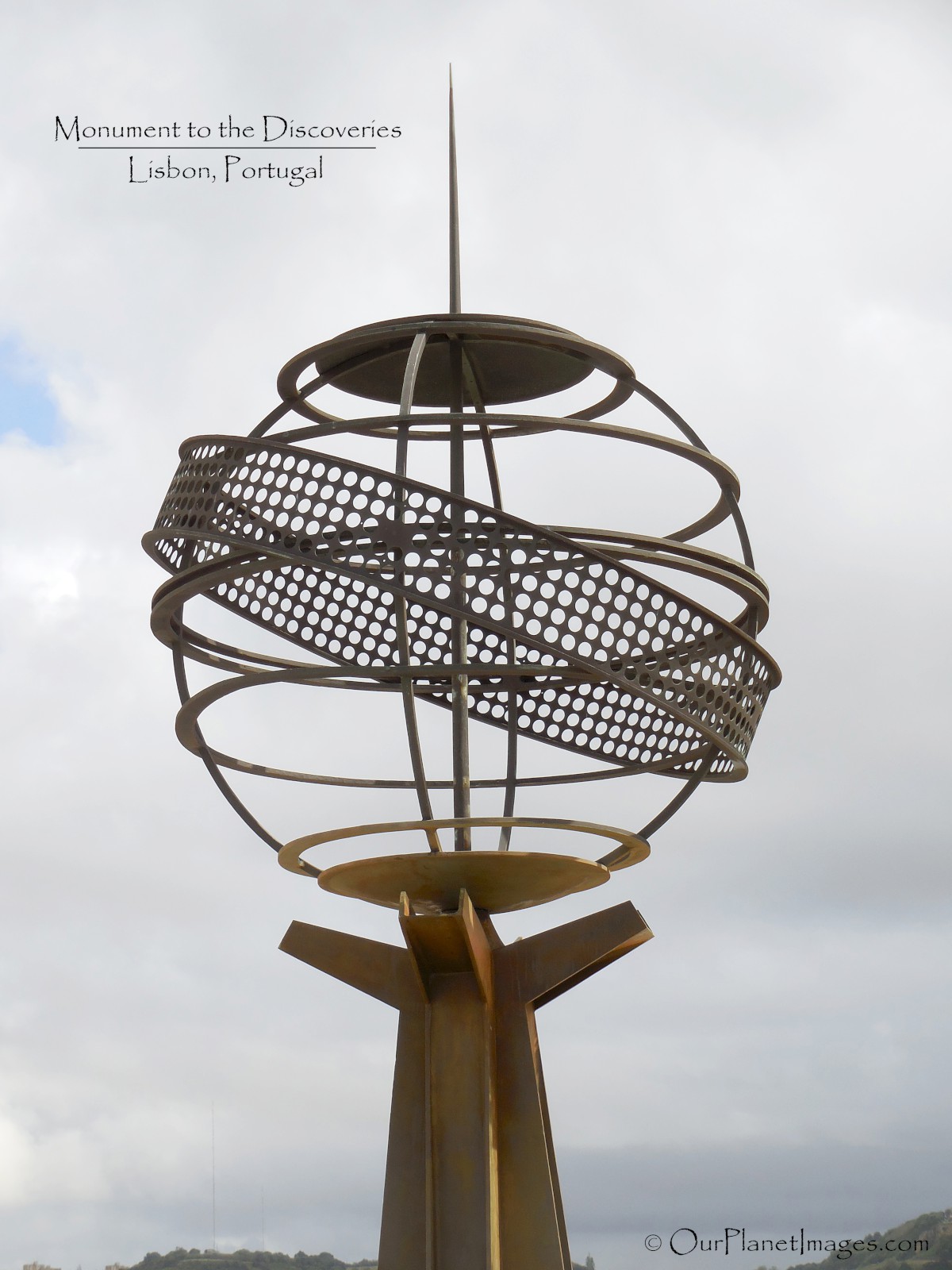
There are a total of 34 statues divided on the two sides of the monument that represent important Portuguese discoverers during the age of discoveries. Some of the status represent the following people:
• Ferdinand Magellan discovered what is now known as the Strait of Magellan and was the first European to sail across the Pacific Ocean. He died in the voyage but his expedition finished the voyage and proved that the globe could be circled by sea and that the world was much larger than had previously been believed.
• Pedro Alvares Cabral who discovered Brazil.
• Bartolomeu Dias, the first person to sail across the Cape of Good Hope.
• Vasco da Gama was the first European to reach India by sea.
• And many other navigators, painters, mathematicians, cartographer and kings.
The photos below show many of the statues that represent these famous Portuguese people.
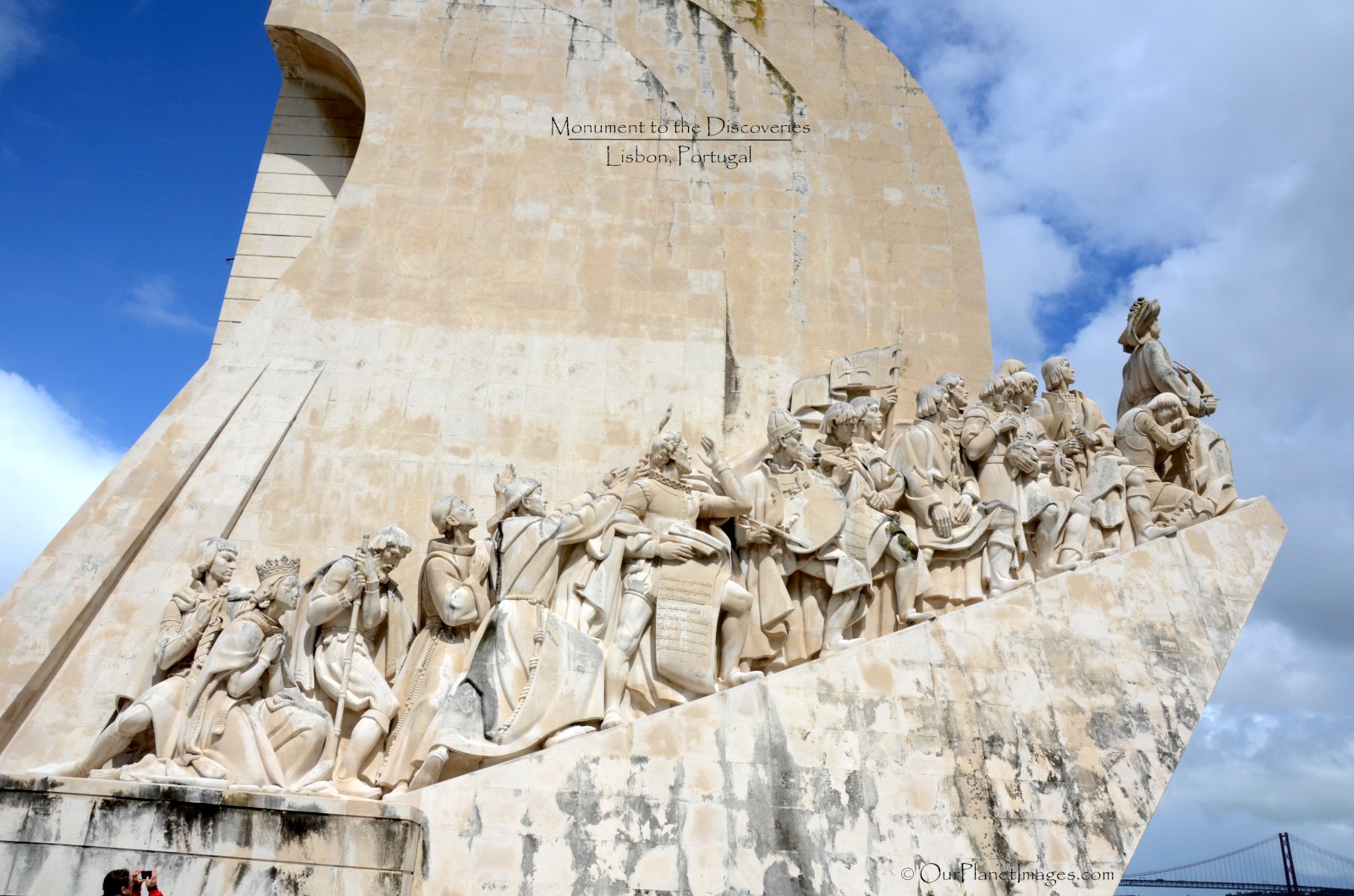
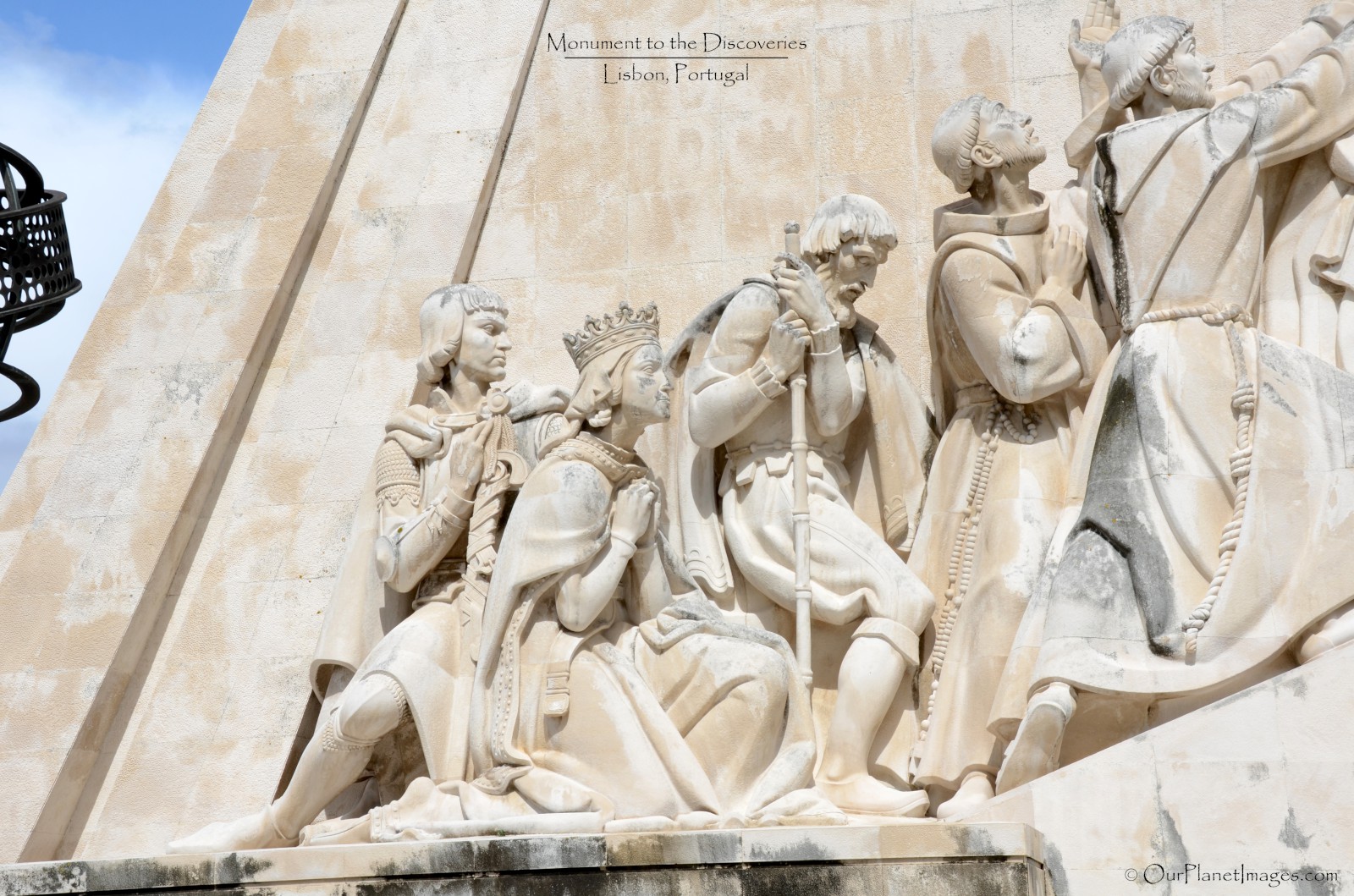
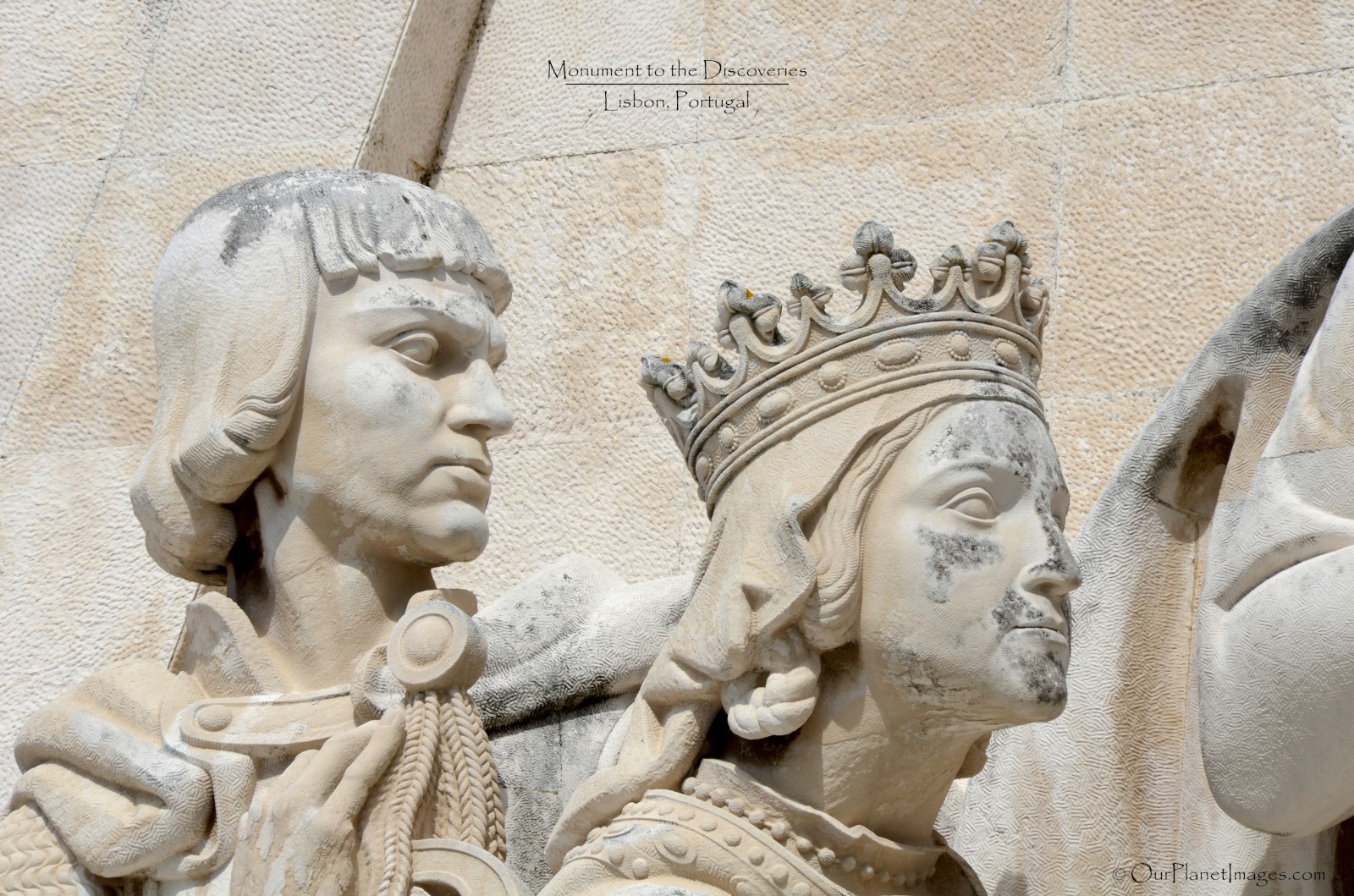
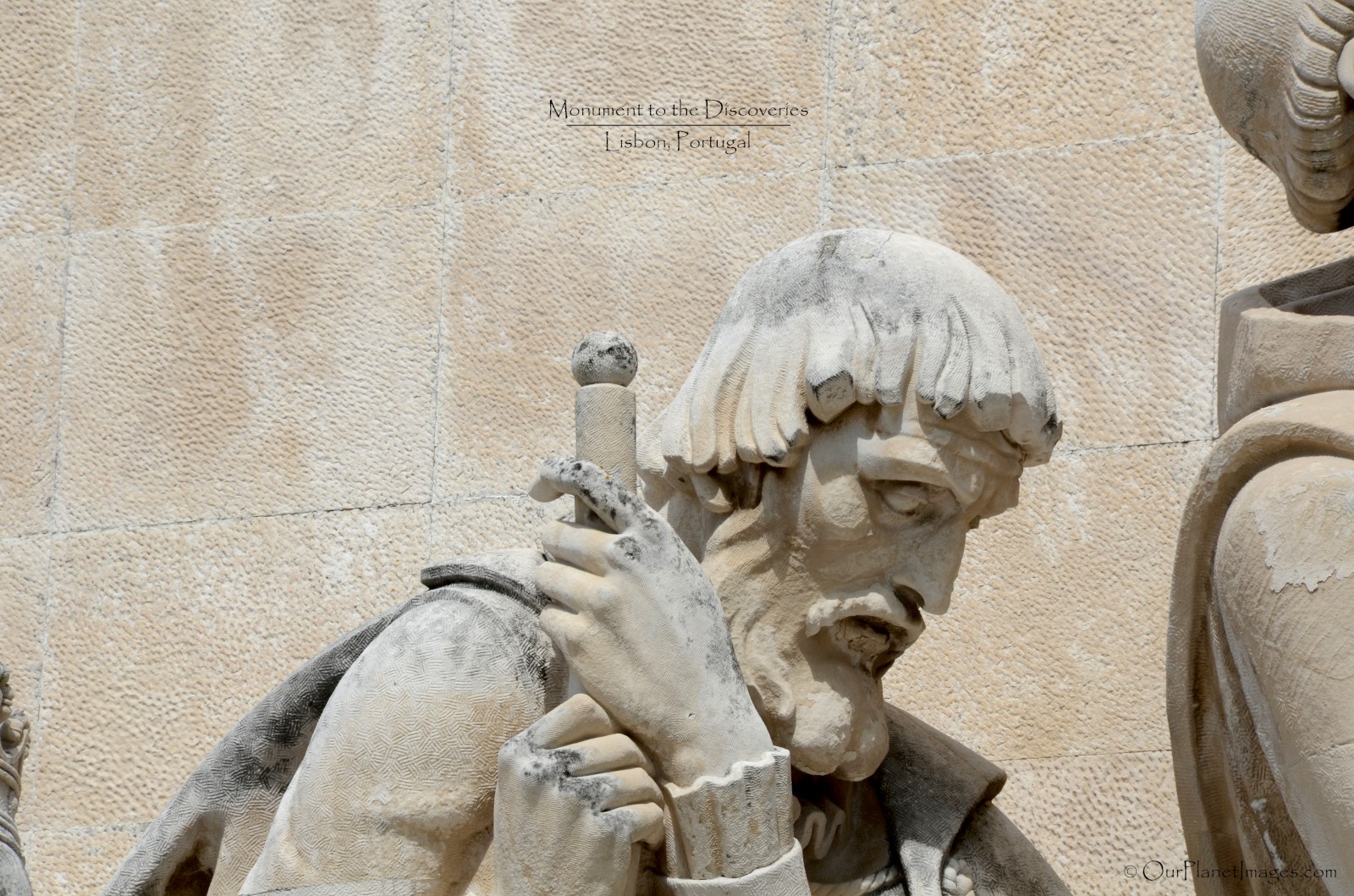

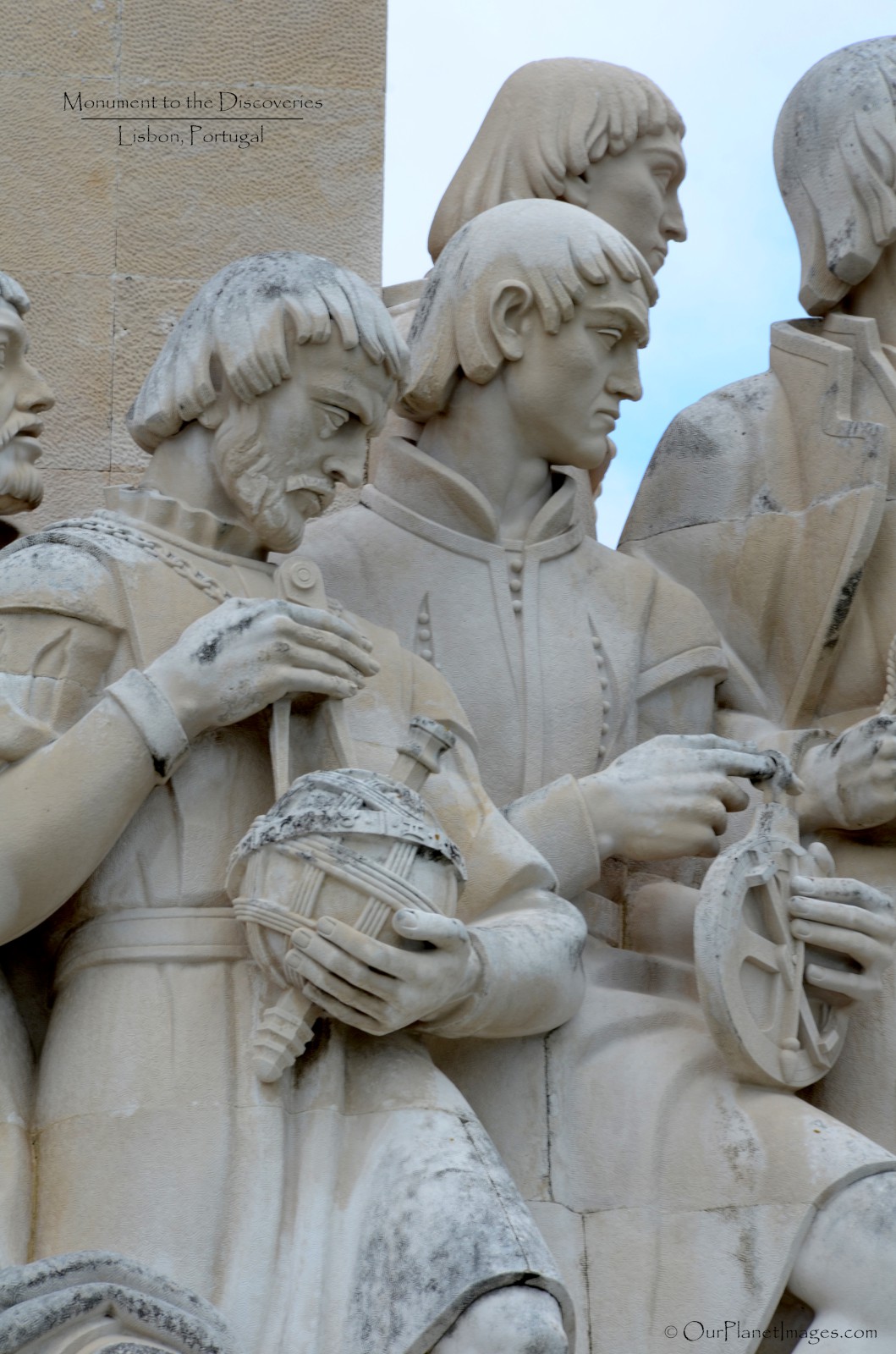
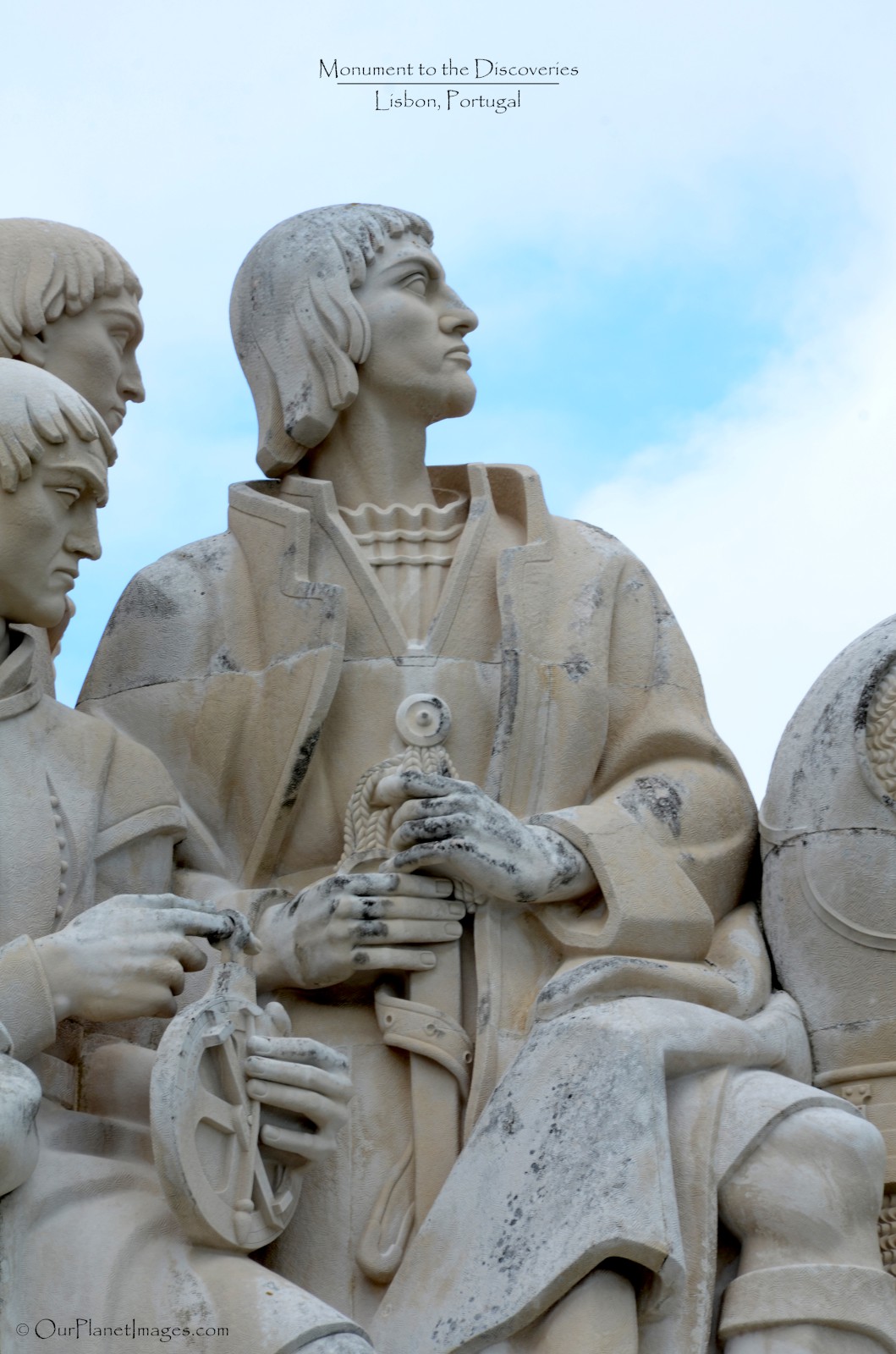
The statue on the end is of Henry the Navigator who is credited with beginning the age of discovery and he started the first school of oceanic navigation. The expeditions that he funded discovered the Azores, Madera and Cape Verde.
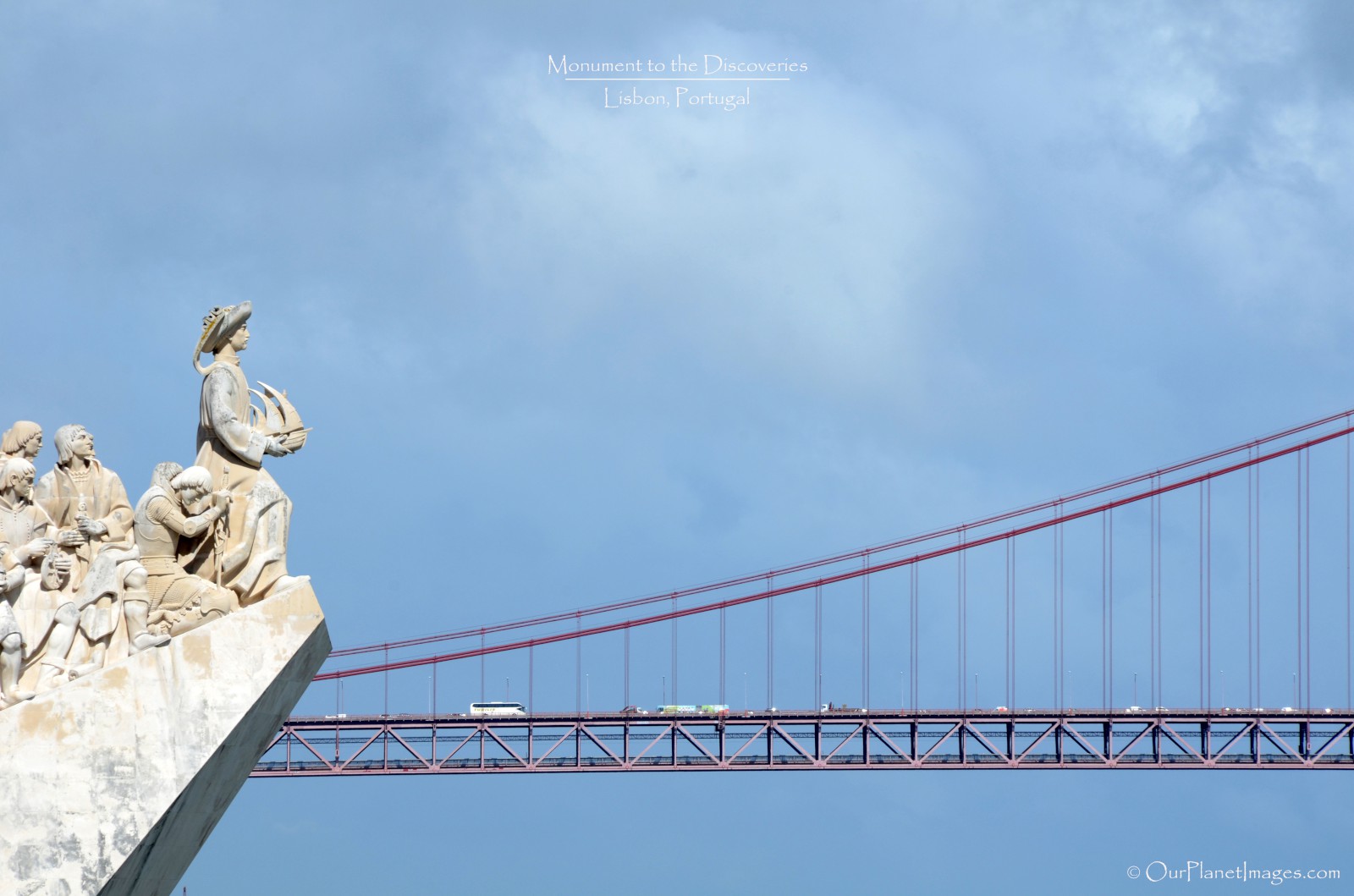

The following photos are more statues of Portuguese discoverers that are located on the other side of the monument.
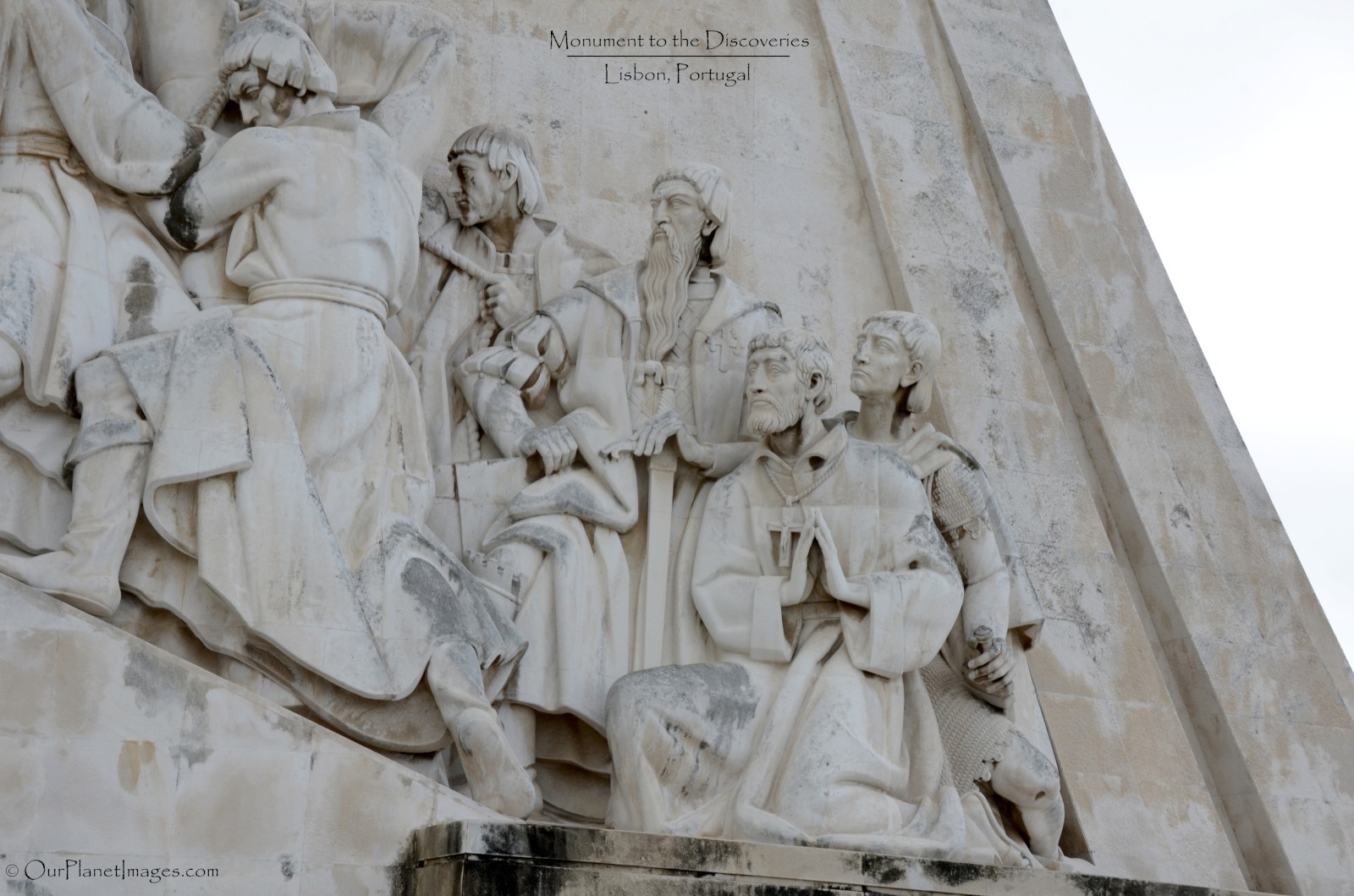
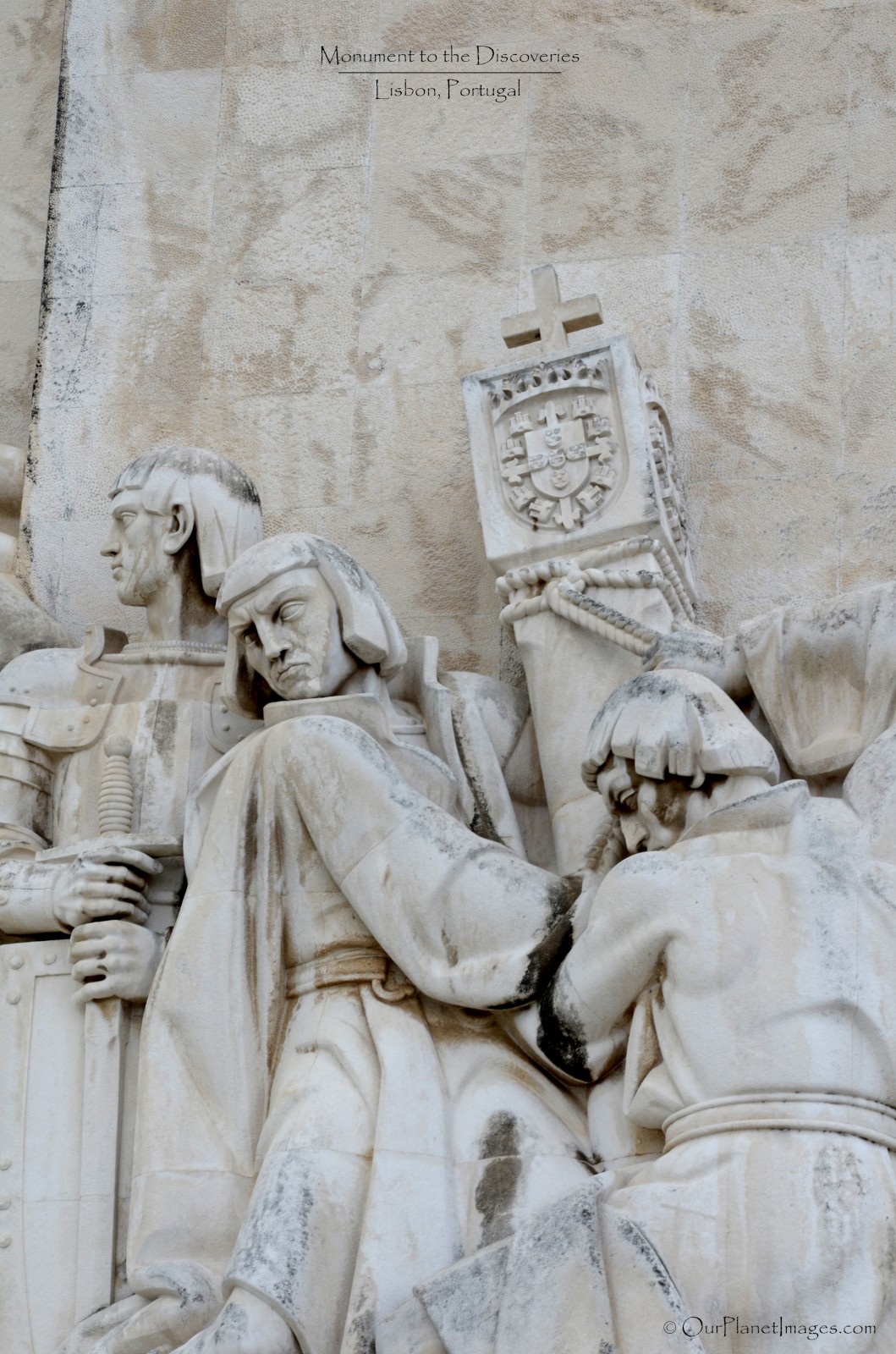
The top of the monument is accessible and provides great views of Lisbon and the Tagus River. In addition to the city surroundings, the observation deck from the top of the monument also allows for a nice view of the entry walkway of the monument. The entry to the monument is across a 50 meter tiled compass with a time period map in the center of a compass showing routes of the Portuguese navigators. The following pictures show a birds eyes view of the monument’s entry walkway when looking down from the observation deck.
